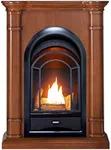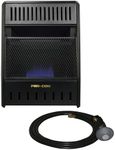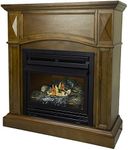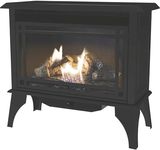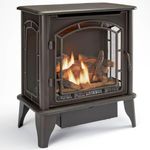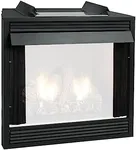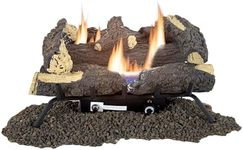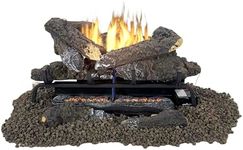Buying Guide for the Best Ventless Gas Fireplace
Choosing the right ventless gas fireplace involves understanding your specific needs and preferences. Ventless gas fireplaces are a great option for those who want the warmth and ambiance of a fireplace without the need for a chimney or venting system. They are easy to install and can be placed in various locations within your home. To make an informed decision, consider the following key specifications and how they align with your requirements.BTU RatingBTU (British Thermal Unit) rating measures the heat output of the fireplace. This is important because it determines how much heat the fireplace can produce. Lower BTU ratings (around 5,000-10,000 BTUs) are suitable for smaller rooms or spaces that require less heat, while higher BTU ratings (20,000-40,000 BTUs) are better for larger areas or homes with higher heating needs. To pick the right one, consider the size of the room you want to heat and how much warmth you need.
Ignition SystemThe ignition system is how the fireplace is lit. There are two main types: manual and electronic. Manual ignition requires you to light the fireplace with a match or lighter, which can be less convenient but is often more reliable. Electronic ignition systems use a switch or remote control to light the fireplace, offering more convenience and ease of use. Choose a manual ignition if you prefer simplicity and reliability, or an electronic ignition if you value convenience and modern features.
Safety FeaturesSafety features are crucial for ventless gas fireplaces as they operate without a venting system. Look for features like an oxygen depletion sensor (ODS), which automatically shuts off the fireplace if oxygen levels drop too low, and a carbon monoxide detector. These features ensure safe operation and provide peace of mind. Prioritize models with comprehensive safety features, especially if you have children or pets.
Design and AestheticsThe design and aesthetics of the fireplace are important for ensuring it complements your home decor. Ventless gas fireplaces come in various styles, from traditional to modern. Consider the overall look you want to achieve in your space. Traditional designs often feature classic mantels and logs, while modern designs may have sleek lines and contemporary finishes. Choose a design that matches your personal style and the existing decor of your home.
Installation and PlacementInstallation and placement are key considerations for ventless gas fireplaces. These fireplaces can be installed in various locations, including walls, corners, and even as freestanding units. Consider where you want to place the fireplace and ensure the chosen model fits the space. Some models are easier to install than others, so if you prefer a DIY approach, look for units with straightforward installation processes. If you plan to hire a professional, ensure the model you choose is compatible with your installation preferences.
Fuel TypeVentless gas fireplaces typically use either natural gas or propane. Natural gas is often more cost-effective and convenient if you already have a natural gas line in your home. Propane is a good alternative if you do not have access to natural gas, as it can be stored in tanks. Consider your existing fuel availability and choose the type that aligns with your home's infrastructure and your personal preferences.
EfficiencyEfficiency refers to how well the fireplace converts fuel into heat. Higher efficiency models will provide more heat with less fuel, making them more cost-effective and environmentally friendly. Look for efficiency ratings and choose a model that offers high efficiency to save on fuel costs and reduce your environmental impact. Consider your heating needs and how often you plan to use the fireplace to determine the importance of efficiency in your decision.

